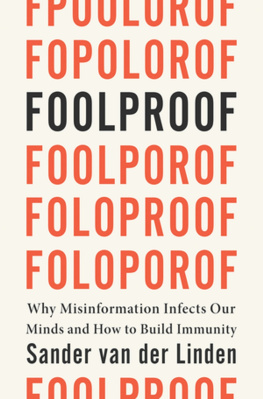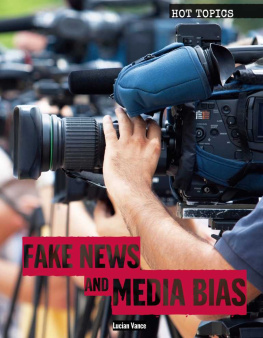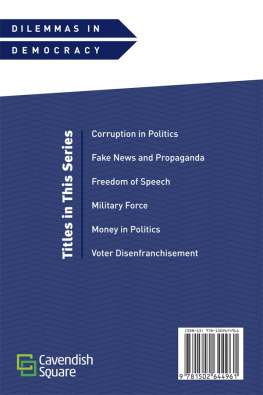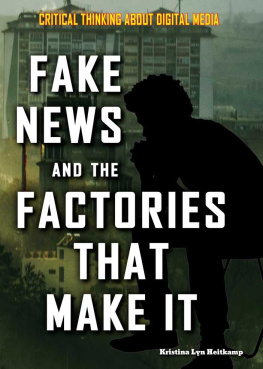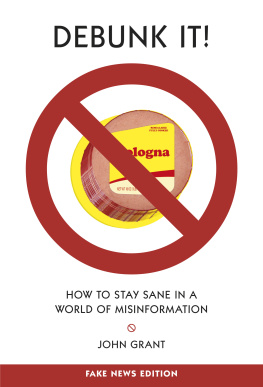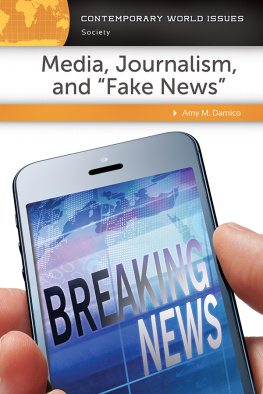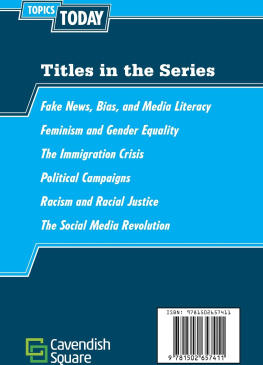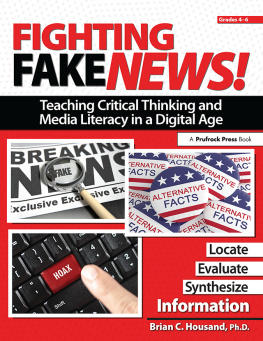Melissa Zimdars - Fake News: Understanding Media and Misinformation in the Digital Age
Here you can read online Melissa Zimdars - Fake News: Understanding Media and Misinformation in the Digital Age full text of the book (entire story) in english for free. Download pdf and epub, get meaning, cover and reviews about this ebook. publisher: MIT Press, genre: Politics. Description of the work, (preface) as well as reviews are available. Best literature library LitArk.com created for fans of good reading and offers a wide selection of genres:
Romance novel
Science fiction
Adventure
Detective
Science
History
Home and family
Prose
Art
Politics
Computer
Non-fiction
Religion
Business
Children
Humor
Choose a favorite category and find really read worthwhile books. Enjoy immersion in the world of imagination, feel the emotions of the characters or learn something new for yourself, make an fascinating discovery.

- Book:Fake News: Understanding Media and Misinformation in the Digital Age
- Author:
- Publisher:MIT Press
- Genre:
- Rating:5 / 5
- Favourites:Add to favourites
- Your mark:
- 100
- 1
- 2
- 3
- 4
- 5
Fake News: Understanding Media and Misinformation in the Digital Age: summary, description and annotation
We offer to read an annotation, description, summary or preface (depends on what the author of the book "Fake News: Understanding Media and Misinformation in the Digital Age" wrote himself). If you haven't found the necessary information about the book — write in the comments, we will try to find it.
Melissa Zimdars: author's other books
Who wrote Fake News: Understanding Media and Misinformation in the Digital Age? Find out the surname, the name of the author of the book and a list of all author's works by series.
Fake News: Understanding Media and Misinformation in the Digital Age — read online for free the complete book (whole text) full work
Below is the text of the book, divided by pages. System saving the place of the last page read, allows you to conveniently read the book "Fake News: Understanding Media and Misinformation in the Digital Age" online for free, without having to search again every time where you left off. Put a bookmark, and you can go to the page where you finished reading at any time.
Font size:
Interval:
Bookmark:
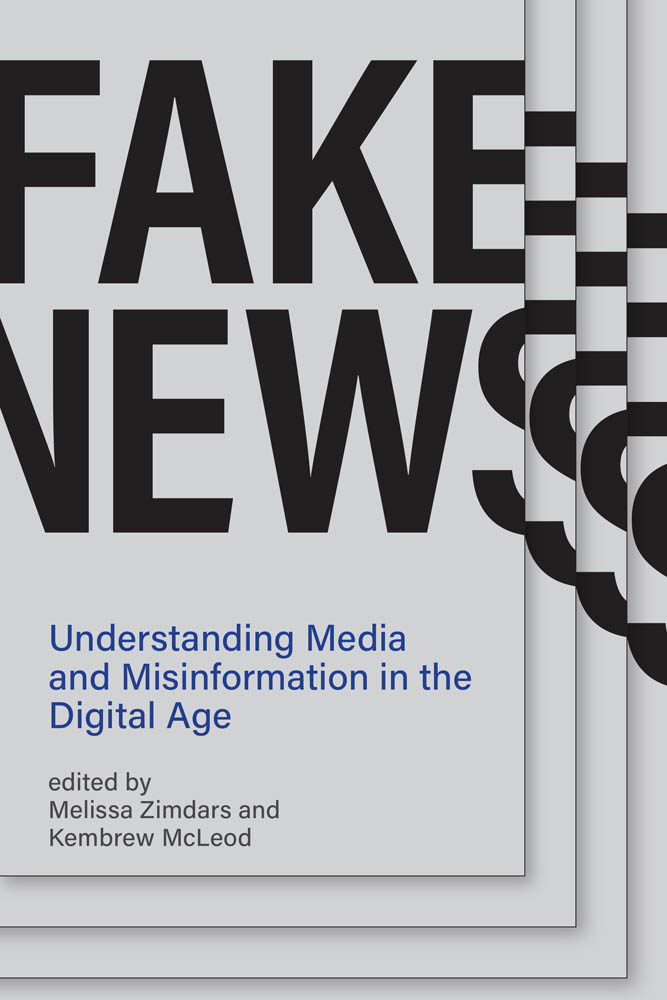
Information Policy Series
Edited by Sandra Braman
The Information Policy Series publishes research on and analysis of significant problems in the field of information policy, including decisions and practices that enable or constrain information, communication, and culture irrespective of the legal silos in which they have traditionally been located as well as state-law-society interactions. Defining information policy as all laws, regulations, and decision-making principles that affect any form of information creation, processing, flows, and use, the series includes attention to the formal decisions, decision-making processes, and entities of government; the formal and informal decisions, decision-making processes, and entities of private and public sector agents capable of constitutive effects on the nature of society; and the cultural habits and predispositions of governmentality that support and sustain government and governance. The parametric functions of information policy at the boundaries of social, informational, and technological systems are of global importance because they provide the context for all communications, interactions, and social processes.
Virtual Economies: Design and Analysis, Vili Lehdonvirta and Edward Castronova
Traversing Digital Babel: Information, E-Government, and Exchange, Alon Peled
Chasing the Tape: Information Law and Policy in Capital Markets, Onnig H. Dombalagian
Regulating the Cloud: Policy for Computing Infrastructure, edited by Christopher S. Yoo and Jean-Franois Blanchette
Privacy on the Ground: Driving Corporate Behavior in the United States and Europe, Kenneth A. Bamberger and Deirdre K. Mulligan
How Not to Network a Nation: The Uneasy History of the Soviet Internet, Benjamin Peters
Hate Spin: The Manufacture of Religious Offense and Its Threat to Democracy, Cherian George
Big Data Is Not a Monolith, edited by Cassidy R. Sugimoto, Hamid R. Ekbia, and Michael Mattioli
Decoding the Social World: Data Science and the Unintended Consequences of Communication, Sandra Gonzlez-Bailn
Open Space: The Global Effort for Open Access to Environmental Satellite Data, Mariel John Borowitz
Youll See This Message When It Is Too Late: The Legal and Economic Aftermath of Cybersecurity Breaches, Josephine Wolff
The Blockchain and the New Architecture of Trust, Kevin Werbach
Digital Lifeline? ICTs for Refugees and Displaced Persons, edited by Carleen F. Maitland
Designing an Internet, David D. Clark
Reluctant Power: Networks, Corporations, and the Struggle for Global Governance in the Early 20th Century, Rita Zajcz
Human Rights in the Age of Platforms, edited by Rikke Frank Jrgensen
The Paradoxes of Network Neutralities, Russell Newman
Zoning China: Online Video, Popular Culture, and the State, Luzhou Li
Design Justice: Community-Led Practices to Build the World We Need, Sasha Costanza-Chock
Fake News: Understanding Media and Misinformation in the Digital Age, edited by Melissa Zimdars and Kembrew McLeod
Fake News
Understanding Media and Misinformation in the Digital Age
Edited by Melissa Zimdars and Kembrew McLeod
The MIT Press
Cambridge, Massachusetts
London, England
2020 Melissa Zimdars and Kembrew McLeod
All rights reserved. No part of this book may be reproduced in any form by any electronic or mechanical means (including photocopying, recording, or information storage and retrieval) without permission in writing from the publisher.
Library of Congress Cataloging-in-Publication Data
Names: Zimdars, Melissa, 1985 editor. | McLeod, Kembrew, 1970 editor.
Title: Fake news : understanding media and misinformation in the digital age / edited by Melissa Zimdars, Kembrew McLeod.
Description: Cambridge, Massachusetts : The MIT Press, 2020. | Series: Information policy | Includes bibliographical references and index.
Identifiers: LCCN 2019022931 | ISBN 9780262538367 (paperback)
Subjects: LCSH: Fake newsUnited States. | Mass media and public opinionUnited States. | DisinformationUnited States. | Social mediaUnited States. | Media literacyUnited States.
Classification: LCC PN4888.F35 F35 2020 | DDC 070.4/3dc23
LC record available at https://lccn.loc.gov/2019022931
d_r0
- Melissa Zimdars
- Mark Andrejevic
- Gina Giotta
- Johan Farkas
- Whitney Phillips
- Claire Wardle
- Theodore L. Glasser, Sheng Zou, and Anita Varma
- Dawn R. Gilpin
- Colin Doty
- Victor Pickard
- Stephanie Ricker Schulte
- Cherian George
- Paul Levinson
- Dan Faltesek
- Adrienne Massanari
- Benjamin Burroughs
- Leslie-Jean Thornton
- Nicholas David Bowman and Elizabeth Cohen
- Danielle Polage
- Panagiotis Takis Metaxas
- Kembrew McLeod
- Benjamin Peters
- Mark Brewin
- Kembrew McLeod
- Kembrew McLeod
- Sophia A. McClennen
- Tarleton Gillespie
- Paul Mihailidis
- Amanda Ann Klein
- Melissa Zimdars
Three types of information disorder.
A story by the debunking organization Snopes, about a story in the Babylon Bee, a Christian satirical site.
A screenshot from the Political Insider using a classic clickbait headline.
An infographic that circulated widely during the U.K. general election in May 2018. The diagram is misleading, as the black did not vote bar does not use the same scale as the rest of the graph.
This tweet was put out after a Twitter account, @HistoricalPics, shared the photo and claimed that it was taken in Nepal shortly after the earthquake.
A video put out by BBC Africa on its Twitter account to explain that a fake video was circulating that purported to be a broadcast from BBC Africa.
A photo that circulated in the lead-up to the 2016 U.S. presidential election. The photo is made up of two images stitched together.
An image that circulated on Twitter and Facebook in the lead-up to the 2016 U.S. presidential election.
The three elements of information disorder.
The three phases of information disorder.
A tweet by Ryan Broderick highlighting how debunks are a form of engagement.
Wiki network.
They smell of sulfur.
This manipulated image circulated on Twitter as evidence that CNN accidentally aired pornography.
A headline from 70news.wordpress.com, which was one of the top Google news results in November 2016 when searching for popular vote election results.
Sandra Braman
It has been hard to know where to begin, when it comes to fake news. Not by becoming immersed in it, now a second full-time job for many, a change even among those of us who have been news hounds all of our lives. Not by reading all of the pertinent scholarship and research, a seeming impossibility today given that this is now the largest growth research industry among those who study communication and society, having replaced earlier well-funded topics such as the impact of violence on television and how to diffuse innovations. Not by engaging in never-ending conversations, critiques, and announcements that we will no longer talk about it, the discussions that onlyas Mark Andrejevic points out in his chapter in this bookmake everything worse.
Font size:
Interval:
Bookmark:
Similar books «Fake News: Understanding Media and Misinformation in the Digital Age»
Look at similar books to Fake News: Understanding Media and Misinformation in the Digital Age. We have selected literature similar in name and meaning in the hope of providing readers with more options to find new, interesting, not yet read works.
Discussion, reviews of the book Fake News: Understanding Media and Misinformation in the Digital Age and just readers' own opinions. Leave your comments, write what you think about the work, its meaning or the main characters. Specify what exactly you liked and what you didn't like, and why you think so.

